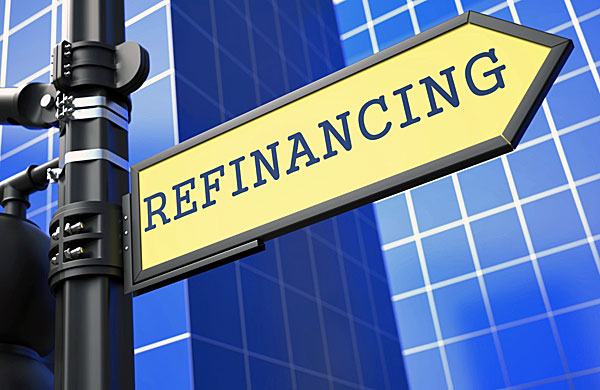
Types Of Refinancing Mortgage
Have you ever felt like your mortgage payments are too much? Are you looking for ways to reduce your monthly mortgage cost or take cash from the equity in your home? Refinancing your mortgage is a great way to save money and possibly get extra funds to pay off debt, make home improvements, or invest. In this article, we will explore the different types of refinancing mortgages available, considerations before refinancing a mortgage, and the common types of mortgages available for refinancing. So if you’re considering taking advantage of this opportunity, read on!

Refinancing Mortgages are available in a variety of forms.
Refinancing a mortgage is a great way to reduce monthly payments, access cash from the equity in your home, or switch to a different type of loan. There are several types of finanza.no options available depending on your financial goals and credit score.
Cash-out refinancing is when you take out a new loan that’s larger than your current mortgage balance and you receive the difference in cash. This option allows you to pay off other debts or make large investments with the extra funds. With this type of loan, however, you’ll need to factor in closing costs.
Rate-and-term refinancing on the other hand allows you to maintain your current principal balance while switching to a different loan term (e.g., a 30-year fixed-rate mortgage). This option can help lower your monthly payments by extending the loan term or converting from an adjustable-rate mortgage (ARM) to a fixed-rate mortgage (FRM).
Finally, cash-in refinancing lets you pay off your existing mortgage with money from another source such as savings or 401K funds. This could help lower interest rates and shorten the loan term if done correctly. However, be sure to check with your lender first since some lenders may require a credit check before approving this type of refinance option.
No matter which type of refinance option you choose, you must shop around for different mortgage lenders who offer competitive rates and fees before deciding on one lender.
Refinancing your mortgage can be a great way to lower your monthly payments and access extra funds, so it’s important to research each type of refinance option before choosing the one that is right for you. Ready to learn more about rate-and-term refinancing? Read on to find out how this type of loan could help you save money.
Rate-and-Term Refinance
Rate-and-term refinancing is a great way to lower your monthly mortgage payments without taking out a larger loan. With this type of refinance, you’ll maintain the principal balance of your original loan while switching to a different loan term, such as a 30-year fixed-rate mortgage. This can help reduce your interest rate and shorten the length of the loan. It’s important to shop around for different lenders who offer competitive rates and fees before deciding on one lender. Refinancing your mortgage could be a great way to save money in the long run, so it’s worth taking the time to explore all of your options and choose the one that is right for you.
Cash-Out Refinance
Cash-out refinance is a type of loan that allows you to borrow additional funds against the equity in your home. This can be used to pay off existing debt, fund large purchases, or make home improvements. When you do a cash-out refinance, you will usually have to pay closing costs and may need to have a higher credit score than when applying for a traditional mortgage. It’s important to consider how much equity you have in your home, as well as your current financial goals and needs before deciding if this option is right for you. If approved, the new loan amount will be higher than the original one and you will need to make monthly payments on it. Make sure to shop around for different lenders who offer competitive rates and fees before making a decision.
Cash-In Refinance
Cash-in refinance is a type of loan that allows you to use the equity in your home to pay off existing debt or make large purchases. This can be a great way to consolidate debt and save on interest payments. When you refinance, you will usually have to go through a credit check, but there are also options available for people with low credit scores. The amount of money you can borrow depends on the amount of equity you have in your home and the current mortgage rate. If approved, the new loan amount will be lower than the original one and you will need to make monthly payments on it. Make sure to shop around for different lenders who offer competitive rates and fees before making a decision.
Examine the benefits and drawbacks of refinancing your mortgage.
Refinancing your mortgage can be a great way to save money on interest payments or to make large purchases. Before taking the plunge, there are a few things to consider. First, you should evaluate your financial goals and determine if refinancing is the right move for you. You should also research different types of mortgages and their associated costs. This includes closing costs, loan terms, and monthly mortgage payments. Common types of mortgages include fixed-rate mortgages, adjustable-rate mortgages, and 30-year fixed-rate mortgages. If you don’t plan on staying in your home for more than a few years, shorter loan terms may be more beneficial as they can result in lower monthly payments over time. In addition, compare different lenders and refinance options to ensure that you are getting the best deal possible. Taking the time to research these considerations will help ensure that you make the right decision when refinancing your mortgage.
Refinancing your mortgage can be an excellent way to save money on interest payments and make large purchases. Be sure to do your research and compare lenders to ensure that you are getting the best deal possible! Now, let’s look at the current mortgage loan situation.
Current Mortgage Loan Situation
The current mortgage loan situation is one of the low rates and flexible terms. With the US Federal Reserve keeping rates near all-time lows, now is a great time to consider refinancing your mortgage. Rates are expected to stay low for the foreseeable future, so there’s no rush to pull the trigger. Before refinancing, it’s important to understand what types of refinance loans are available and which one best suits your needs. There are three main types of refinance loans: cash-out refinance, rate-and-term refinance, and cash-in refinance. A cash-out refinance allows you to toy against your home equity to pay off other debts or make large purchases. Rate-and-term refinancing involves taking out a new loan with a lower interest rate than your original loan while keeping the same loan term. Lastly, cash-in refinancing involves paying extra money towards the presence of your existing loan to reduce the amount owed and lower monthly payments over time. It’s important to remember that when refinancing, lenders will usually require a credit check so be sure to check your credit score before applying for any type of loan!
Financial Goals
Having a financial goal is essential to make the best decisions when it comes to refinancing your mortgage. Before you start the process, it’s important to think about why you are considering refinancing and what you hope to gain from the process. For example, if your goal is to reduce your monthly mortgage payments, then a rate-and-term refinance may be the best option for you as this type of loan allows you to lock in a lower interest rate and/or extend your loan term so that monthly payments become more manageable. On the other hand, if you are looking for extra cash for large purchases or debt consolidation, then a cash-out refinance may be more suitable. It’s also important to weigh the costs associated with each option before committing – closing costs can vary depending on the type of loan chosen decision-making to be factored into your decision-making process.
Common Types of Mortgages Available for Refinancing
When it comes to refinancing mortgages, there are a variety of common types of mortgages available. A popular and commonly used type is the 30-year fixed-rate mortgage, which provides borrowers with a fixed interest rate for the entire loan term. This can be beneficial for those who want predictable monthly payments and long-term stability. Another option is an adjustable-rate mortgage (ARM), which offers borrowers a lower rate that can adjust periodically over time depending on market conditions. ARMs are typically best for home borrowers for a shorter period and don’t mind taking on more risk with fluctuating rates. In addition, some lenders offer specialized refinance options such as cash-in refinances or special programs designed to help homeowners pay off their original loan faster with shorter loan terms. It’s important to compare different types of loans and select one that best fits your financial goals and budget. Be sure to also consider any potential fees associated with refinancing before signing any paperwork.

Conclusion
Refinancing a mortgage can present an opportunity to gain financial security; however, one must consider various loan types, closing costs, credit score requirements, and monthly payments before committing to the process. It’s also wise to compare rates from multiple lenders to find one that best fits your needs. With the right plan in place and a thorough understanding of the process, you could potentially save thousands of dollars over the life of your loan.

